Water pumps
The original water pump was a
two-part assembly comprising (i) a cast bronze mounting bracket bolted onto the
timing chest and containing the main rotary seal, and (ii) a cast aluminium
pump body that encloses the rotor and incorporates the outlet passage that
bolts onto the cylinder block.
Many owners have found that
their aluminium pump body castings have corroded over the years, sometimes to the point of
being unrepairable. This is due to the electrolytic properties of
aluminium relative to both bronze and iron. In the 1960's, Barry Cooke, who then owned the Le Mans
team car, chassis 6794, had patterns made to a modified design and cast
replacements in bronze. The modifications included a separate closure
plate to the forward side of the pump body (allowing the rotor to be fitted to
the pump shaft after the body) and the separation of the outlet pipe into two components, thus
allowing the outlet flange to be bolted up independently of the pump body.
At least two other patterns
have been made to the original design, one in Australia and one in the UK, and
replacements have been cast from these, in aluminium. The images below show
examples of both types.
Click on
thumbnail to view higher resolution image. Right-click to save to file.
|
|
|
|
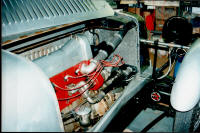
|
|
|
|
Original water pump on Peter Livesey's car (chassis 7308). |
|
|
|
|
|
|
|
|
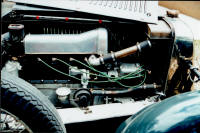
|
|
|
|
Original water pump on Chassis 7231, when owned by John Ham. |
|
|
|
|
|
|
|
|
|
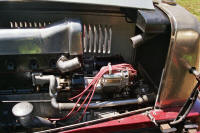
|
|
|
|
Original water pump on Alain Cerf's car, chassis 7193. |
|
|
|
|
|
|
|
|

|
|
|
|
Replica of original aluminium one-piece pump body on the Honda Museum car, chassis 7315. |
|
|
|
|
|
|
|
|
|
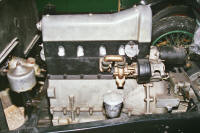
|
|
|
|
Bronze three-piece pump body on Barry Stapleton's very early FWD, chassis 6722. This is an example of the modified "Barry Cooke" design. |
|
|
|
|
|
|
|
|

|
|
|
|
Close-up of the bronze pump in the preceding photo. |
|
|
|
|
|
|
|
|
|
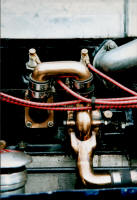
|
|
|
|
Another example of the "Barry Cooke" bronze pump, on chassis 7191 while owned by Tony Cox. |
|
|
|
|
|
|
|
|






